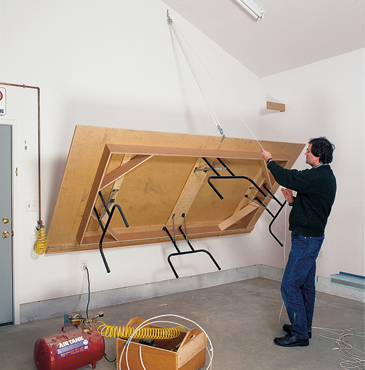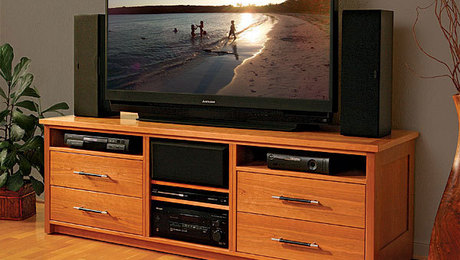STL214: Built ins? Screw em!
Mike Farrington joins Anissa and Ben to discuss sanding techniques, built in joinery, workbenches, and smooth moves.Question 1:
From Mark:
My worktable is oversized (4′ by 8′ 9″), big enough to house full sheet goods on a shelf underneath and a second shelf has incredible storage possibilities. On top, there is room for a workspace, a planer station, a tool caddy, a big marble slab for dead flat reference work. The top can quickly be configured for many different operations. If my workbench was smaller and many items had to find a different home, would the benefits outweigh the costs? I think bigger is more efficient. Am I missing the forest for the trees? What would be gained from having a smaller workbench?
 |
Three Small-Shop Solutions
When workspace is at a premium, create convertible spaces and make your tools mobile |
Question 2:
From Patrick:
I know you say that you should change sandpaper as soon as you think that it’s getting old, or when you take it off to change grits, you shouldn’t put it back on. But there are countless times when I’m sanding and I change grits and the paper is obviously brand new. Any scientific or professional input on when abrasives actually break down?
Another question. As a small scale, professional woodworker, I recently hired an employee who has a bit of background in woodworking. I’m nervous that if I assign them tasks that they’re not familiar with on high-end commission work, that something may get messed up. I love teaching people these skills, but am wary of teaching and then immediately testing those skills on a piece that someone is paying for – the stakes are pretty high. Any tips?
Segment: Smooth move
Ben: Hitting the same protruding screw with both his spokeshave and his #3.
Mike: (Nope… I’m not going to try and sum this one up into a single sentence)
Anissa: Leaving the nozzle in the gas tank and driving off… after rigging the nozzle to work unattended.
Question 3:
From Larry:
I’d really appreciate your take on various aspects of built-ins that I’m grappling with. What is your preferred method of joinery for base cabinets and bookcases? I’m leaning towards a combination of dadoes, rabbets, and biscuits. A Domino is way out of my price range and I’m not keen on the look of pocket screws. Also, on the lower cabinets, I like the idea of a solid wood countertop, but I’m concerned about wood movement, with the top half of the bookcase sitting on top of the counter.
 |
|
 |
Question 4:
From Paul:
Wanted to add a candidate for best material for jig construction: MDO plywood, sometimes called sign board. It’s good quality conventional plywood covered with resin infused paper on both faces. The plywood uses exterior glue and the faces are waterproof as well, which is why it is often used for exterior signs. Of course you have to deal with the edges like with any plywood. I think of it as halfway between Baltic birch and the ridiculously expensive phenolic plywood. The surface is very smooth and quite hard, and the panels are very flat so it works very well for jigs. It can be a little hard to find, but some lumberyards stock it.
Recommendations:
Jeff: Pull out your old cassettes and listen to them
Ben: Listen to The World Famous Headliners
Mike: Listen to everything James Taylor has recorded
Anissa: Surfaces “Sundays Best”
Every two weeks, a team of Fine Woodworking staffers answers questions from readers on Shop Talk Live, Fine Woodworking‘s biweekly podcast. Send your woodworking questions to [email protected] for consideration in the regular broadcast! Our continued existence relies upon listener support. So if you enjoy the show, be sure to leave us a five-star rating and maybe even a nice comment on our iTunes page.























Comments
More Mike F! More Mike F!
The lava lamp and name switches had me in stitches. Just what I needed heading into the weekend. Wonderful to see the 'other Mike' presenting.
I couldn't find a link to the video here, but it is posted on YouTube.
Thanks for the tip. I think they left it off.
One thought on the larger benchtop/work station is that while it is nice for storing full sheets it will be prone to stacking and burying. Unless you put in shelving to separate thicknesses, which in turn will limit what can be done with that space. Might it not be better to have your sheets standing vertically so as to not have to move every piece that has been put on top of the one you need?
Great podcast. Great to here Mike F on the podcast. Cudo’s to Jeff for the Lava lamp
Log in or create an account to post a comment.
Sign up Log in